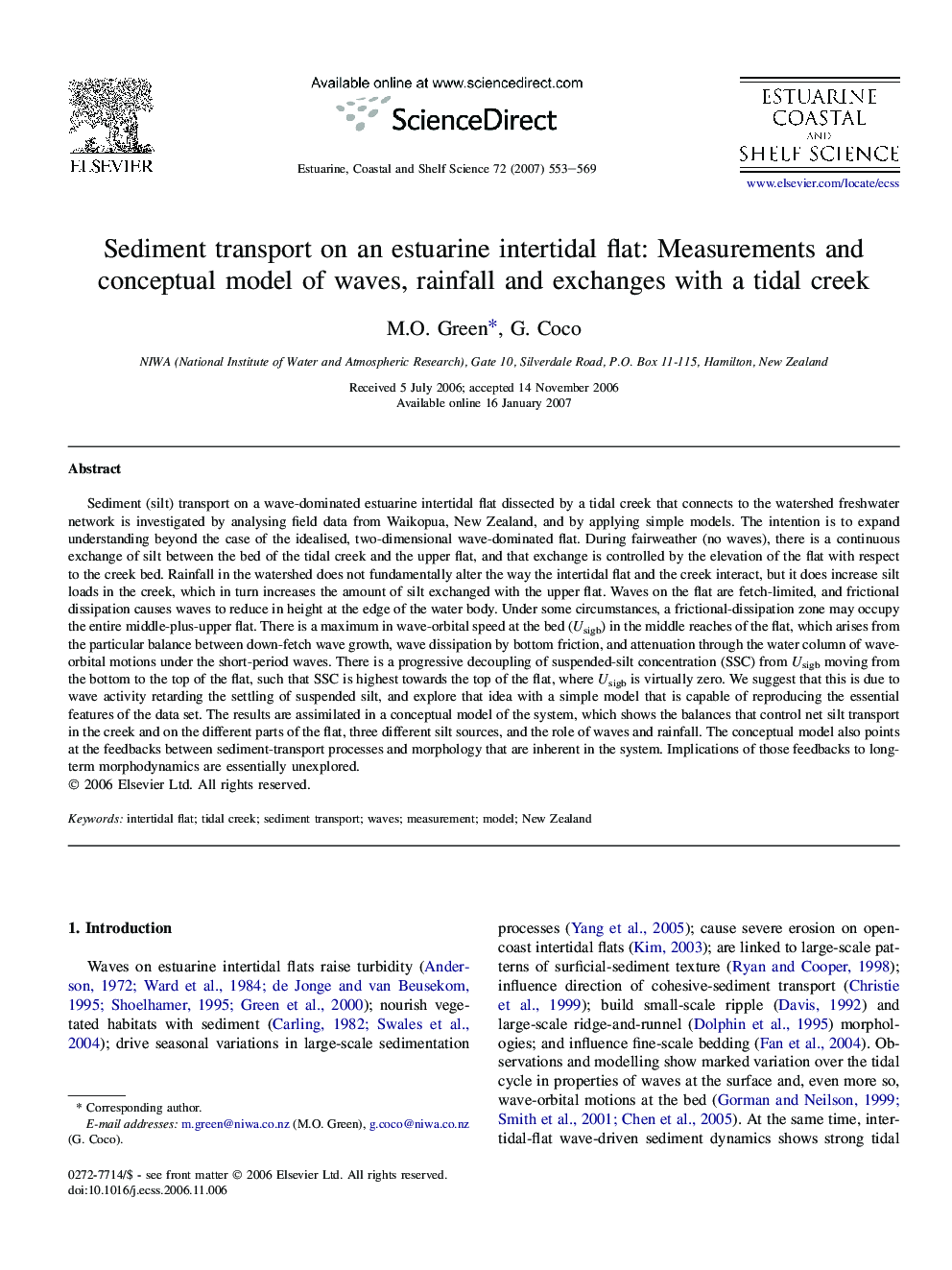| Article ID | Journal | Published Year | Pages | File Type |
|---|---|---|---|---|
| 4541934 | Estuarine, Coastal and Shelf Science | 2007 | 17 Pages |
Sediment (silt) transport on a wave-dominated estuarine intertidal flat dissected by a tidal creek that connects to the watershed freshwater network is investigated by analysing field data from Waikopua, New Zealand, and by applying simple models. The intention is to expand understanding beyond the case of the idealised, two-dimensional wave-dominated flat. During fairweather (no waves), there is a continuous exchange of silt between the bed of the tidal creek and the upper flat, and that exchange is controlled by the elevation of the flat with respect to the creek bed. Rainfall in the watershed does not fundamentally alter the way the intertidal flat and the creek interact, but it does increase silt loads in the creek, which in turn increases the amount of silt exchanged with the upper flat. Waves on the flat are fetch-limited, and frictional dissipation causes waves to reduce in height at the edge of the water body. Under some circumstances, a frictional-dissipation zone may occupy the entire middle-plus-upper flat. There is a maximum in wave-orbital speed at the bed (Usigb) in the middle reaches of the flat, which arises from the particular balance between down-fetch wave growth, wave dissipation by bottom friction, and attenuation through the water column of wave-orbital motions under the short-period waves. There is a progressive decoupling of suspended-silt concentration (SSC) from Usigb moving from the bottom to the top of the flat, such that SSC is highest towards the top of the flat, where Usigb is virtually zero. We suggest that this is due to wave activity retarding the settling of suspended silt, and explore that idea with a simple model that is capable of reproducing the essential features of the data set. The results are assimilated in a conceptual model of the system, which shows the balances that control net silt transport in the creek and on the different parts of the flat, three different silt sources, and the role of waves and rainfall. The conceptual model also points at the feedbacks between sediment-transport processes and morphology that are inherent in the system. Implications of those feedbacks to long-term morphodynamics are essentially unexplored.
